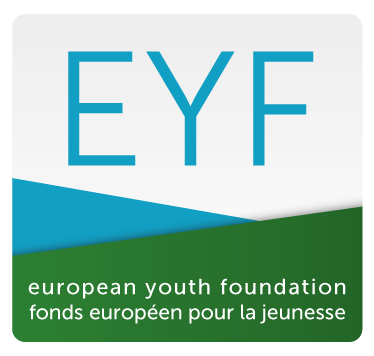Our first activity of the year took place earlier this month in Thessaloniki (Greece). This youth seminar entitled “Living in Europe Together”
It gathered 37 young people from 11 European countries and managed to create an enabling environment for new ideas, youth collaboration and a few promising actions of advocacy.
To recount the week and capture the spirit of the 5-days-activity, we decided to change a little bit our usual method and bring more color to our pedagogical report. To do so, we called on the expertise of Coline, graphic facilitator.
What is graphic recording?
Graphic recording (sometimes referred as reflective graphics, graphic listening…) is a visual process used in various events such as meetings, seminars, workshops and conferences. Its aim is to capture the ideas and expressions of a group or an individual in words, images and colors.
Inspired by architecture, design, computer engineering, art and psychology, graphic recording is often produced in large scale imagery, allowing a work process to be summarized clearly and recorded in real time. This visually translation of complex content allows people to reach their goal with more efficiency and to keep a better lasting memory of the working session.
Graphic recording combines the skills of note-taking, art and story-telling.

Meet Coline, graphic facilitator
Coline is artist and graphic facilitator. She studied architecture at the École Nationale Supérieure d’Architecture Paris-Malaquais in Paris and at the Technical University of Istanbul. She did a European Voluntary Service in a Berlin-based NGO and is since then active in an international network of creative engaged people. Living between France and Austria, she works from project to project, from country to country.
Visit her portfolio to know more about her work and maybe contact her if you would like to introduce graphic recording in one of your beautiful youth projects 😉

Living Together: our first activity visually recorded
Graphic recording was definitely an added value during this Youth Seminar and both the participants and the team were enthusiastic about Coline’s work. Between each activity or at the end of an intense day; we could see the participants coming near the drawings, studying them, reliving the things they had participated in with their eyes and really marking their own memories with the whole purpose and conclusions of the day.
It is a fantastic reporting tool which gave life to the participants ideas in real time and allowed them to be even more focused and productive. We can’t wait to repeat the experience in Romania in July for our second activity of the year, the Partnership Building Activity “Working together for an inclusive Europe”.



This project was supported by the European Youth Foundation of the Council of Europe
and the Erasmus+ programme of the European Union

